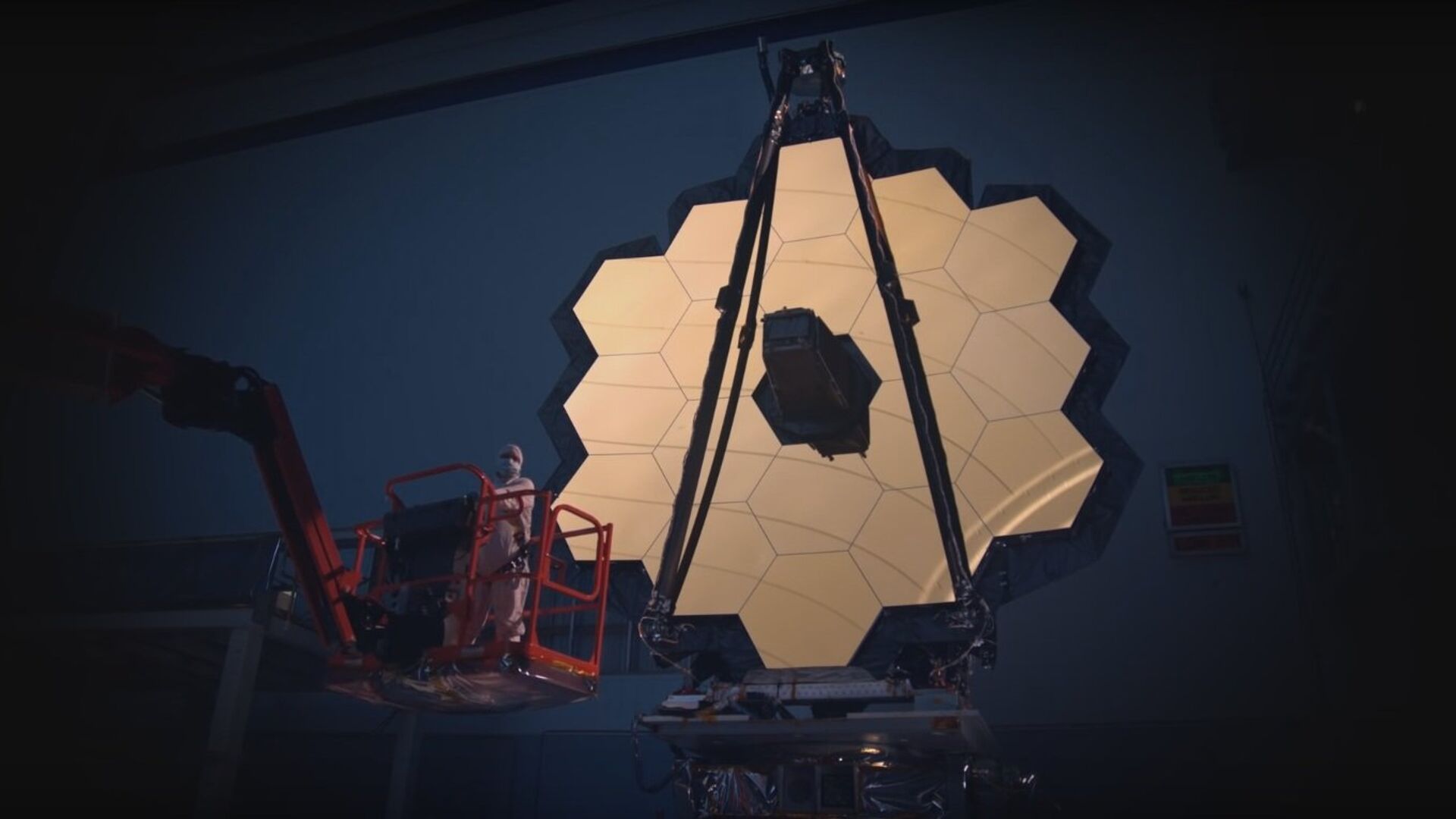James Webb Telescope Reaches Another Milestone as NASA Announces Its Mirror is Fully Aligned
10:20 GMT 18.03.2022 (Updated: 16:57 GMT 12.04.2023)
Subscribe
The revolutionary observatory, which has been under development by the space agency for two decades, embarked on its historic mission on 25 December. The telescope, which is 100 times more powerful than its predecessor Hubble, will be able to "travel back in time" and search for the first stars that appeared after the Big Bang.
The James Webb Space Telescope (JWST) has reached yet another milestone as it has fully aligned its main mirror, NASA has revealed. The space agency said every parameter of the Optical Telescope Element has been checked and tested, and is performing “at, or above, expectations.
"More than 20 years ago, the Webb team set out to build the most powerful telescope that anyone has ever put in space and came up with an audacious optical design to meet demanding science goals. Today we can say that design is going to deliver," said Thomas Zurbuchen, associate administrator for NASA’s Science Mission Directorate in Washington.
The JWST is using segmented mirror technology. While some ground-based telescopes have the same feature, this is the first time that scientists have attempted to use this technology its space. The 21-foot, 4-inch mirror is so big that researchers had to fold it as none of the existing rockets could carry it when it is fully extended.
It is made of 18 hexagonal, beryllium segments, aka mini-mirrors. Aside from having difficulties when unfolding this behemoth remotely in extreme conditions, NASA scientists also had to perform the daunting task of aligning all 18 segments so that they could form a single mirror.
The device is vital to the work of the telescope, which attempts to "travel back in time" by observing the first stars and young galaxies. It takes billions of years for light from these distant stars to reach the Earth, so by seeing this light, the telescope will be able to observe the stars as they were when the Solar System formed.
NASA said its researchers are now proceeding through the "remaining alignment steps" before testing instruments installed on the telescope. This includes the Near-Infrared Spectrograph, Mid-Infrared Instrument, and Near InfraRed Imager and Slitless Spectrograph.
It is made of 18 hexagonal, beryllium segments, aka mini-mirrors. Aside from having difficulties when unfolding this behemoth remotely in extreme conditions, NASA scientists also had to perform the daunting task of aligning all 18 segments so that they could form a single mirror.
The device is vital to the work of the telescope, which attempts to "travel back in time" by observing the first stars and young galaxies. It takes billions of years for light from these distant stars to reach the Earth, so by seeing this light, the telescope will be able to observe the stars as they were when the Solar System formed.
NASA said its researchers are now proceeding through the "remaining alignment steps" before testing instruments installed on the telescope. This includes the Near-Infrared Spectrograph, Mid-Infrared Instrument, and Near InfraRed Imager and Slitless Spectrograph.
The devices will help achieve JSWT’s main goals, namely to study planetary systems and the origin of life, understand the star and planet formation as well as the formation and evolution of galaxies. NASA says it expects to receive first data from the telescope this summer.

